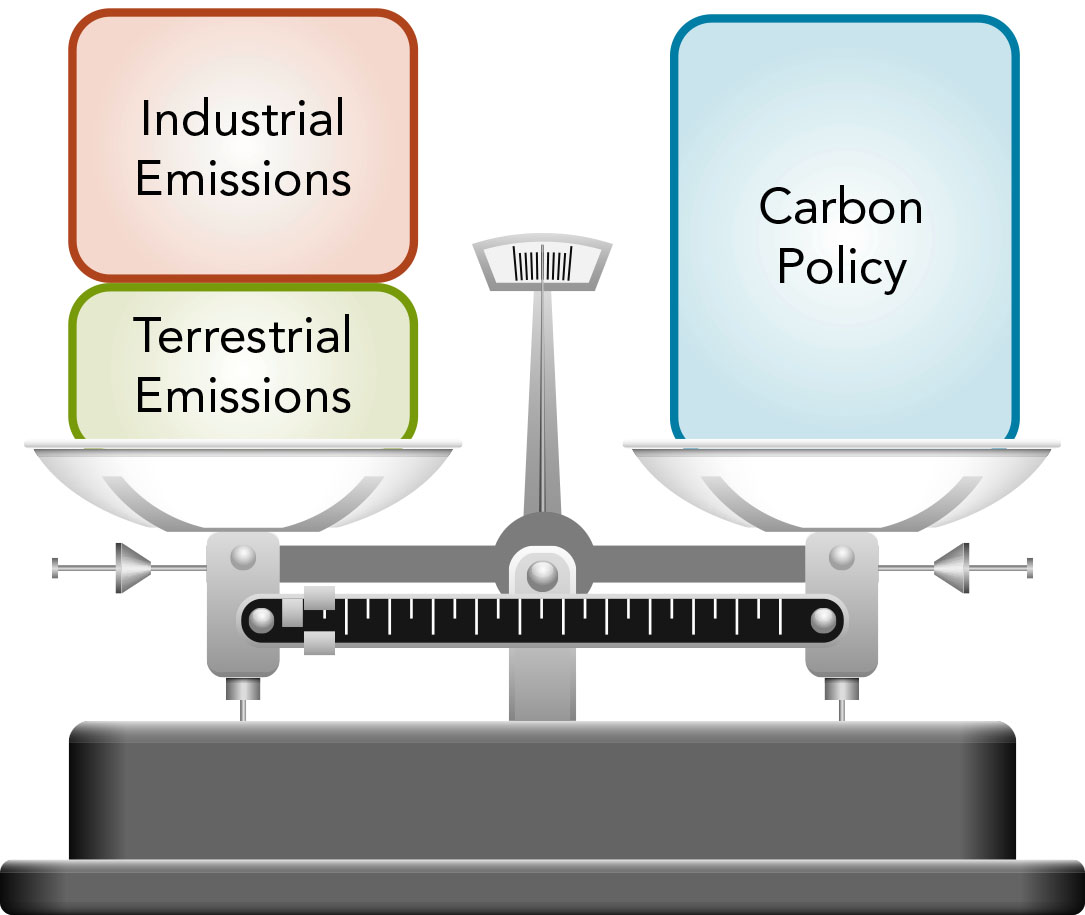Atmospher Sci & Global Chg
Research Highlights
May 2013
Fires, Hurricanes and the Climate
Research shows how natural disturbances affect climate change response strategies

A carbon policy, with strategies to limit human-caused emissions or support clean energy systems, must balance the carbon flux from industrial and "natural" land-based emissions for the ecosystem. Current terrestrial emissions are negative globally, primarily due to trees storing more carbon than fires and other disturbances release. Researchers are looking at possible scenarios where terrestrial emissions may change as a result of natural disturbances.
Results: Fires and hurricanes are only two examples of natural disturbances that drastically affect millions of people worldwide. Now, scientists are considering how these events might limit opportunities for climate mitigation as well. A team of scientists from Pacific Northwest National Laboratory, working at the Joint Global Change Research Institute at Maryland, found that strategies to alleviate the impacts of climate change will need to account for future land and atmospheric disturbances that impact forests. This study is the first to quantify the effect of future natural disturbances on climate mitigation strategies.
Why It Matters: You can't ignore Mother Nature. The carbon cycle is an unavoidable fact for climate planners and policy makers. Processes that substantially affect changes in the natural carbon cycle, such as extreme weather events, should be accounted for. This study shows that policy makers need to consider that changes in the frequency of extreme events, a likely impact of climate change, will affect how forests and other ecosystems grow.
"A good example of a ‘natural disturbance' is vegetation or forest fires. They release a lot of carbon dioxide, soot and other pollutants into the atmosphere. Current climate change mitigation strategies can only make assumptions for these big events," said lead author Dr. Yannick Le Page of PNNL. "If society wants to mitigate climate change but natural disturbances increase, we may have to decrease human-caused carbon emissions even more to balance the additional carbon flux in ecosystems."
Methods: Using the Global Change Assessment Model (GCAM), an integrated model of human and earth systems developed at PNNL with support from the U.S. Department of Energy, the team modified the model to account for disturbance impacts on ecosystems. Using GCAM, they projected the interaction between the Earth's system and human system under economic conditions required to limit climate change through greenhouse gas emissions mitigation through the year 2095. Natural ecosystems, human land use, energy and food production were among the systems assessed.
The team compared model results from three disturbance rate scenarios: no change, a decrease in natural disturbance rates, and a significant increase in natural disturbance rates. They found that disturbances can have substantial impacts on the Earth's carbon balance. Accounting for both human-caused and natural disturbances, greenhouse gas mitigation strategies may have to work harder to limit the impacts from climate change. According to the research, if extreme events occur less frequently, or society improves land-management practices employing strategies such as land-carbon sequestration, a transition to low-carbon technology can happen at a lower economic cost for society.
What's Next? The new research provides a foundation for ecosystem and disturbance models and their integration into socio-economic frameworks, such as GCAM. Because these feedbacks are dependent on climate, further research will be done considering specific scenarios of how climate change may alter natural disturbance rates.
Acknowledgments:
Sponsors: The research was funded by the NASA Terrestrial Ecology and Inter-Disciplinary Studies programs and the U.S. Department of Energy (DOE) Office of Science Integrated Assessment of Global Climate Change Program. The research used Global Change Assessment Model at the PNNL's Joint Global Change Research Institute (JGCRI) also supported by DOE's Integrated Assessment Research Program. JGCRI is a partnership between PNNL and the University of Maryland.
Research Team: Yannick Le Page, George Hurtt, Allison Thomson, Ben Bond-Lamberty, Pralit Patel, Marshall Wise, Kate Calvin, Page Kyle, Leon Clarke, James Edmonds and Tony Janetos at PNNL.
Reference: Le Page Y, G Hurtt, AM Thomson, B Bond-Lamberty, P Patel, M Wise, K Calvin, P Kyle, L Clarke, J Edmonds and A Janetos. 2013. "Sensitivity of Climate Mitigation Strategies to Natural Disturbances." Environmental Research Letters 8(1): 015018. DOI:10.1088/1748-9326/8/1/015018.
